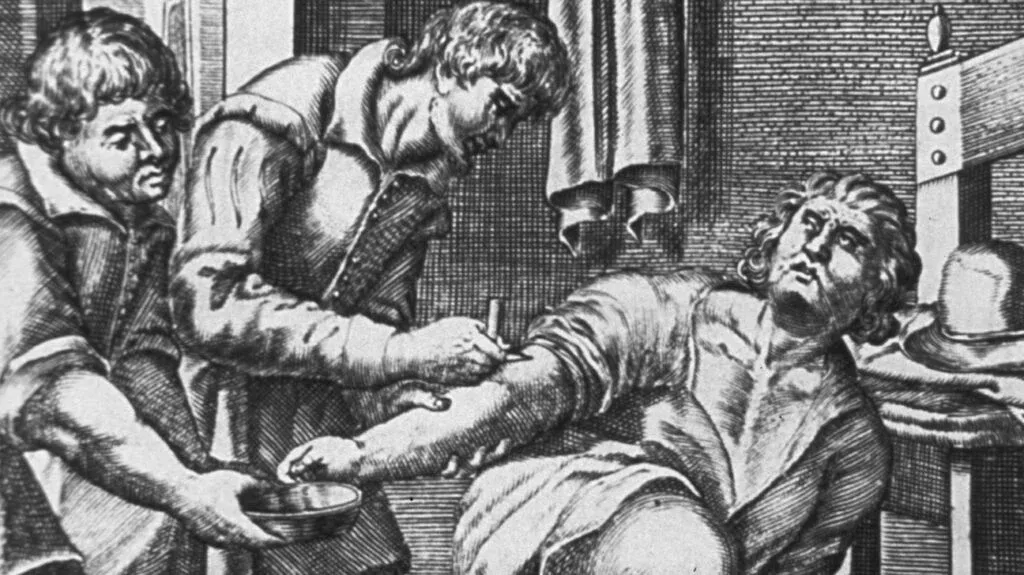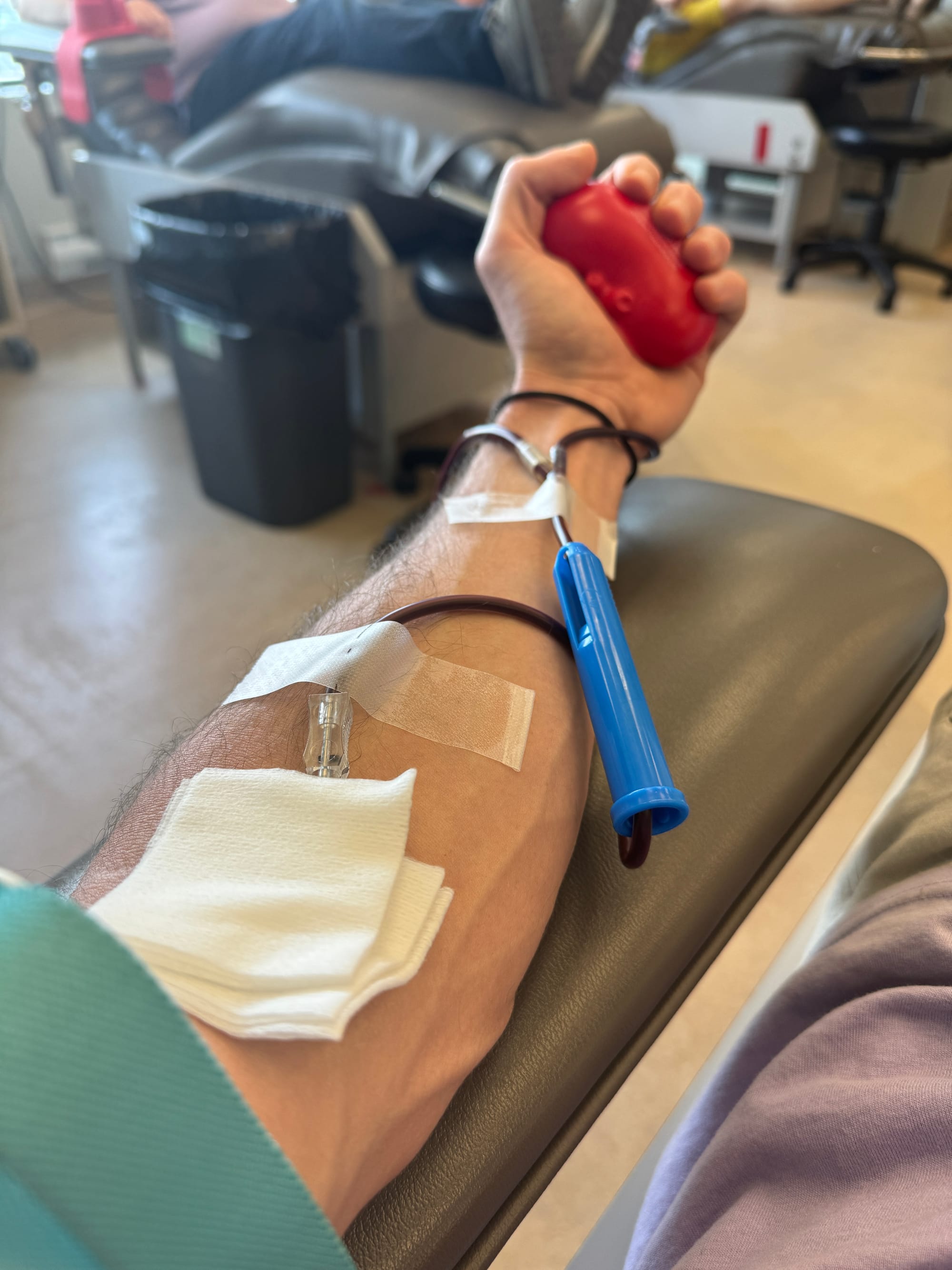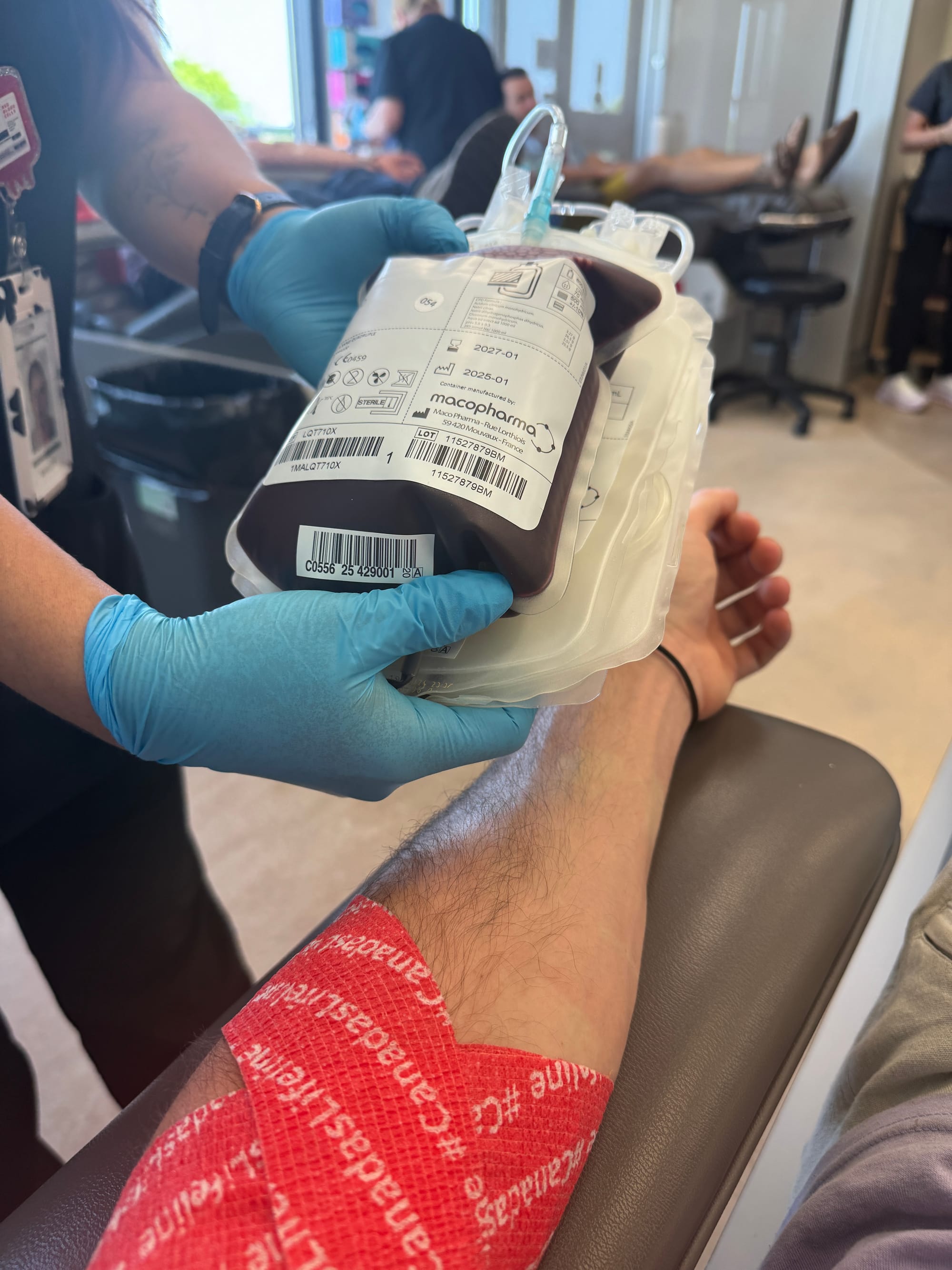Modern Bloodletting.

I donated blood for the first time this week...


550ml. AB+. 10 minutes. Veins like a leaf. 🍃
A nurse asked all first-time donors why they came...
Aside from the obvious “it’s a good thing to do” (what I said), I wasn’t ready to drop “it’s essentially modern bloodletting and a solid health practice.”
But let’s talk about that...
Medical Rebranding.
Modern medical science is amazing at taking ancient practices/remedies, running a study to prove what was known for millennia, renaming it, and presenting it as a 'new innovative discovery’.
Two prominent examples from the past decades:
- Wim Hof tweaking and rebranding the ancient Tibetan Buddhist Tummo ‘Inner Fire’ breathing technique. Hat tip to pranayama from yoga here, too.
- Daddy Huberman & the online nervous system thinkboi’s taking the ancient yogic practice of yoga nidra and rebranding it as NSDR ‘Non-Sleep Deep Rest’.
This is happening with psychedelics, breathwork, yoga, meditation, and the entire Amazonian Pharmacopeia, like kambo, dragon's blood, and more.
There is another practice, one far more archaic and controversial, that continues on to this day, newly branded with fancy-sounding medical jargon...
Bloodletting.

Bloodletting.
Oh yes! The practice of draining blood for the treatment of a variety of diseases and ailments.
Dating back 2300 years to the time of Hippocrates. From the British Columbia Medical Journal:
"[Hippocrates] believed that existence was represented by the four basic elements—earth, air, fire, and water—which in humans were related to the four basic humors: blood, phlegm, black bile, yellow bile. Each humor was centred in a particular organ—brain, lung, spleen, and gall bladder—and related to a particular personality type—sanguine, phlegmatic, melancholic, and choleric.
Being ill meant having an imbalance of the four humors. Therefore treatment consisted of removing an amount of the excessive humor by various means such as bloodletting, purging, catharsis, diuresis, and so on."
Thus, the practice of bloodletting was born.
Though we may view this as an embarrassing footnote in the annals of medicine today, it continues, as alive as ever:
Therapeutic Phlebotomy.
"Therapeutic phlebotomy is when blood is drawn to treat a disease. It is used today in the treatment of a few diseases, including hemochromatosis, sickle cell disease, porphyria cutanea tarda, nonalcoholic fatty liver disease, and polycythemia.”
Bloodletting sounds way more hardcore.
But it continues because there are real benefits. Even if you are not sick or dying, intentional bloodletting in the form of donating blood is a double whammy:
- You get a few solid personal health benefits.
- You can save up to 3 lives with a single donation. Win-win.
Benefits of Bloodletting:
- Free mini check-up during the screening process.
- Healthier heart/vascular system (lower blood pressure (BP) & risk of heart attack).
- Lowers/manages iron levels. Some people donate blood simply to manage iron levels.
- The body creates fresh/new red blood cells, white blood cells, platelets, and plasma. Cellular energy and vitality win.
- Improves circulation
- Reduces inflammation.
- A little positive boost from endorphin release.
Not bad, eh?
It was fascinating to see the variety of people there. University students, a triathlete husband/wife whose friend had cancer and needed a transfusion, and a couple of older folks.
No rhyme nor reason to who was there–on a random Wednesday afternoon–donating life-saving medicine for people they would never know or meet.
It hit me hard:
There are so many influencers and ‘new paradigm’ online thinkers advocating for saving the planet, helping others, being a better person, virtue signalling (a group I most certainly fall into), yet these random run-of-the-mill Canadians had probably done more to save real lives than any of them?
Wild. Humbling.
There you have it. The modern science of therapeutic phlebotomy. The ancient art of bloodletting. Personal health benefits with social good.
If you can, consider becoming a donor. 🩸
You might be on the other side of that equation someday,
EB.
No spam, no sharing to third party. Only you and me.
